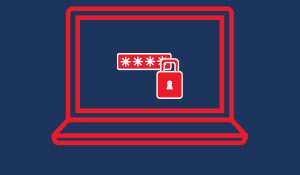21 Essential Steps to Take When Your Company Faces a Cyber Attack
In the current age of digitalization, companies across various sectors and sizes face a growing risk of cyber attacks. Despite implementing...
8 min read
 DriveLock
Jul 24, 2023 3:59:50 PM
DriveLock
Jul 24, 2023 3:59:50 PM

Cybersecurity incidents have become an inevitable reality for businesses of all sizes. From data breaches to ransomware attacks, the threats are diverse, relentless, and can strike at any moment. In such a challenging environment, a robust and well-structured incident response strategy is not just a luxury but an absolute necessity to safeguard your organization's valuable assets.
| TABLE OF CONTENT |
In this guide, we will unravel the intricacies of incident response, empowering you to build a proactive defense against cyber threats and effectively mitigate the fallout of potential incidents.
Cyberattacks are not a matter of "if" but "when," the absence of a robust incident response plan leaves organizations dangerously exposed. Shockingly, studies reveal that a significant percentage of companies, including critical enterprises, still lack a well-defined and tested incident response strategy, despite the escalating frequency and sophistication of cyber threats. This lack of preparedness can translate into catastrophic consequences, with breaches leading to extended downtime, massive financial losses, and a severe erosion of stakeholder trust, underscoring the urgent need for proactive incident response planning.
Incident response refers to the systematic and organized approach an organization takes to identify, manage, and resolve security incidents, cyberattacks, or other unexpected events that may threaten the confidentiality, integrity, or availability of its information, systems, or assets. The primary goal of incident response is to minimize the impact of incidents and facilitate a swift and effective recovery to normal operations.
In the context of cybersecurity, incident response involves a coordinated effort by a specialized team to detect, analyze, contain, eradicate, and recover from security incidents. The process typically includes identifying the nature and scope of the incident, preserving evidence for forensic analysis, notifying relevant stakeholders, and implementing measures to prevent future occurrences.
Incident Response Management refers to the process of planning, organizing, and coordinating an organization's response to security incidents, cyberattacks, or other disruptive events that may threaten the confidentiality, integrity, or availability of its data and systems. It is a proactive and systematic approach designed to minimize the impact of incidents, contain their effects, and swiftly restore normal operations.
Incident response management is a crucial component of an organization's overall cybersecurity strategy. By investing in proactive planning and preparation, companies can enhance their ability to respond effectively to incidents, protect their assets and reputation, and reduce the impact of potential security breaches.
Key aspects of incident response management include:
Without a well-defined strategy in place, organizations risk prolonged downtime, significant financial losses, and irreparable damage to customer trust when security incidents inevitably occur. Investing in a comprehensive incident response framework provides a crucial safety net, enabling businesses to effectively contain breaches, minimize their impact, and swiftly return to normal operations, ultimately ensuring resilience in the face of cyber adversity.
An incident response plan (IRP) is a structured and documented approach that outlines how an organization will handle and respond to various types of incidents, including cybersecurity breaches, data breaches, security threats, system failures, and other unexpected events that can potentially impact the organization's operations, assets, or reputation.
The primary purpose of an incident response plan is to provide a clear and coordinated set of actions that the organization's incident response team and relevant stakeholders should follow when responding to an incident. A well-crafted IRP aims to minimize the impact of incidents, contain the damage, and facilitate a quick and effective recovery to normal operations.
Incident response plan is set up by incident response team and it involves involves careful planning, organization, and coordination. Read out 6 tips to consider when establishing incident response team:
Creating a comprehensive incident response plan is crucial for any organization to effectively handle security breaches, cyberattacks, or other incidents that may occur.
1. Purpose and Scope: The incident response plan outlines the procedures and guidelines for detecting, assessing, and mitigating security incidents within XYZ Corporation. It covers incidents related to data breaches, malware infections, insider threats, and denial-of-service attacks.
2. Setting up a Incident Response Team (IRT): The incident response team is composed of the following members:
3. Incident Classification: Incidents will be classified into three levels based on their potential impact:
4. Incident Detection and Reporting: Employees must report any suspected incidents to the IT Helpdesk. The IT Helpdesk will escalate the incident to the Incident Response Team Leader immediately.
5. Incident Response Procedures: Each incident response level will have specific procedures, which will include:
6. Communication and Notification: The Communications Manager will be responsible for communicating with internal and external stakeholders, including employees, customers, partners, regulatory authorities, and law enforcement, as required.
7. Recovery and Restoration: The IT Administrator, in coordination with the IT Security Specialist, will lead the recovery efforts. All restored systems and data will undergo verification to ensure their integrity and security.
8. Training and Awareness: All IRT members will receive regular training on incident response procedures, cybersecurity best practices, and emerging threats. Employees will also receive security awareness training to help prevent and report incidents.
9. Testing and Validation: The incident response plan will be tested through periodic tabletop exercises and simulations to assess the team's preparedness and identify areas for improvement.
10. Compliance and Legal Considerations: The Legal Advisor will ensure that all incident response activities comply with relevant laws and regulations, including data breach notification requirements.
11. Continuous Improvement: The Incident Response Team Leader will conduct post-incident reviews after each event and update the incident response plan based on lessons learned and emerging threats.
12. Resources and Third-Party Involvement: The company will maintain relationships with external cybersecurity firms and law enforcement agencies to seek assistance when required.
13. Incident Response Plan Activation: The incident response plan will be activated when an incident is confirmed or suspected. The Incident Response Team Leader will make the decision to activate the plan.
14. Plan Distribution and Access: The incident response plan will be accessible to all IRT members and relevant stakeholders. It will be stored securely and reviewed annually for updates.
Crafting an effective incident response strategy goes beyond simply having a plan; it requires adhering to key best practices that empower organizations to navigate the complexities of cyber incidents with agility and precision. These guidelines encompass proactive measures, meticulous execution during an event, and diligent post-incident activities, all contributing to a more resilient security posture. Our IT security experts prepared tips and best practices to keep in mind when creating incident response plan and security awareness .
In conclusion, incident response is a critical pillar of your organization's cybersecurity fortress. With the right preparation, a dedicated team, and well-defined procedures, you can effectively detect, contain, and recover from security incidents, minimizing their impact on your business.
By fostering a culture of security awareness among your employees and empowering them to be vigilant, you create an additional layer of defense against potential incidents. With the power of incident response at your side, you can face the ever-changing landscape of cyber threats with confidence.

In the current age of digitalization, companies across various sectors and sizes face a growing risk of cyber attacks. Despite implementing...

1 min read
Among the many tactics employed by cybercriminals, one particularly insidious and targeted form of attack stands out: spear phishing. Spear phishing...

1 min read
Cybersecurity is as essential as medical expertise. Ransomware attacks on healthcare systems are increasingly putting patient lives and sensitive...